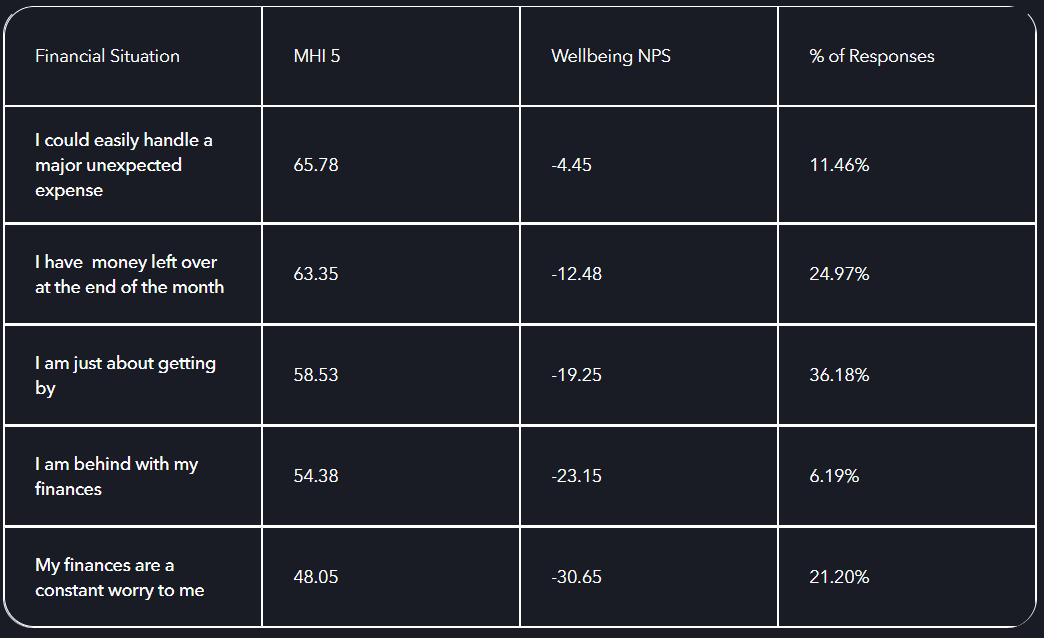In 2025, wellbeing sits at the centre of both retention and recruitment strategies. The 2025 National Student Survey reported a further decline in student satisfaction, while Eurostat data shows inflation across the euro area is running at about 2.2 % year-on-year (1). Together, these pressures are forcing universities to focus on the everyday drivers of student life.
As student wellbeing has become one of the most pressing priorities in higher education, understanding what truly shapes it requires moving beyond policy statements and pulse surveys. Analysis from StudentCrowd, grounded in thousands of authentic student reviews, reveals a powerful truth: well-being is not an isolated initiative. It is the sum of daily experiences, small interactions, and the systems that underpin student life.
Listening to the student voice at scale
Across 154 UK universities and over 35,000 courses, StudentCrowd’s data points to clear, consistent patterns in how students perceive their experience. Positive sentiment is rarely about grand gestures. Instead, it’s rooted in the tangible - a sense of community, responsive staff, welcoming spaces, and a visible commitment to student success. These are the hallmarks of institutions that nurture wellbeing.
By contrast, negative sentiment often reflects moments of disconnection: poor Wi-Fi, limited career guidance, administrative frustration, or a disengaged Students’ Union. These seemingly peripheral issues chip away at belonging and confidence, underscoring that wellbeing is shaped as much by infrastructure and process as by counselling or support teams.
“Wellbeing is rarely about grand gestures. It’s built through everyday moments of connection, responsiveness and belonging.”
The European Student Living Monitor (SLM) by The Class Foundation extends this insight across borders. Drawing on more than 19,000 student responses from 16 countries, the SLM finds the same pattern: the most satisfied students are those who feel seen and supported in their daily environments. Mental health outcomes correlate directly with having agency and access — whether in the classroom, the residence, or community life — showing that wellbeing is a system-wide indicator of how effectively the student ecosystem functions.
The powerful case for the importance of accommodation
As a cornerstone of the lived experience, it's perhaps unsurprising that accommodation plays an enormous in student satisfaction. In fact, students’ satisfaction with their accommodation strongly influences their overall university experience. Those rating their accommodation below 3.5 stars never rated their university or course 4 stars or higher, while students giving 3.5 stars or above had an 86% likelihood of awarding 4-star-plus ratings(2). This highlights a clear positive correlation: happy living conditions are closely linked to higher satisfaction with both university and course.
“Students rating their accommodation below 3.5 stars never rated their university or course 4 stars or higher.”
Across Europe, the Class Foundation’s European student Living Monitor 2023-25 reinforces this link with empirical precision. Students living in purpose-built student accommodation (PBSA) report an average MHI-5 mental health score of 58.4, compared with 56.2 for those in other types of housing, and just 51.1 for those living at home. When students remain with parents because they can’t find alternatives, that score drops to 44.3, and to 42.6 when financial barriers prevent moving out.
Availability and choice also shape wellbeing: students who secure their first-choice accommodation report an MHI-5 score of 59.6, versus 54.0 for those who don’t. Among those unable to obtain their preferred option, 51 percent cite unavailability as the main reason (average MHI-5 = 53.7), while 23 percent were priced out due to affordability (average MHI-5 = 49.1). These figures mirror what many UK students describe qualitatively — that wellbeing begins not on campus, but with having a secure, affordable, and appropriate place to live.
Human connection remains the strongest differentiator
Among the most striking insights is the influence of non-academic staff. In 22% of five-star reviews, students specifically cite the kindness and responsiveness of support or administrative teams. These individuals often represent a university’s front line; the human interface that determines whether a student feels seen or lost in the system. Recognising and empowering these teams is therefore central to any wellbeing strategy.
Similarly, strong relationships with personal tutors and clear communication from careers services emerge as recurring themes in positive reviews. Where universities combine academic excellence with pastoral attentiveness and practical guidance, students report higher satisfaction and stronger emotional resilience.
“In 22 % of five-star reviews, students specifically mention the kindness and responsiveness of support or administrative teams.”
Complementary insights from The Class Foundation’s European Student Living Monitor (2023–25) reinforce this link between human connection, career guidance, and wellbeing. Services that foster belonging and professional growth — such as on-site community managers, student-led events, and access to career support — show the highest positive impact on wellbeing outcomes. The SLM data also highlights that community-facing roles, such as residence or reception teams, have a measurable effect on happiness: students who regularly participate in community activities achieve an average MHI-5 of 62.3, compared to 56.5 for those who do not. Conversely, loneliness produces the steepest decline recorded in the survey — those who report feeling lonely score 49.9, compared to 63.7 among those who don’t, a 13.8-point gap.
Students with access to career or job support report some of the strongest Wellbeing_NPS and MHI-5 scores, while those without access often experience a negative wellbeing impact. 63.3% (nearly 2/3rds) of students face either lack of access, or unaware where to seek career guidance. SLM identifies an opportunity for operators, and universities to professionalise, improve accessibility, and better signpost these essential services.
Mental health as a systemic measure
Analysis highlights a steady rise in references to mental health, particularly within Arts, Nursing and Psychology disciplines. This trend signals both growing openness and a need for universities to view mental health not as an adjunct service but as a systemic indicator of how well the institution functions. Administrative friction, inconsistent feedback, and poor communication are not merely inefficiencies; they are well-being risks.
Findings from The Class Foundation’s European Student Living Monitor (2023–25) confirm this system-wide dimension of student mental health. 56.6% report having no access to or awareness of mental-health support. The SLM further shows that where professional support is available, students’ satisfaction and loyalty rise sharply. Those who frequently access mental-health services report much higher Traditional NPS and Wellbeing_NPS (NPS calculated based on happiness impact of a service provided by accommodation/institution) and are among the most likely to recommend their accommodation or institution. In contrast, the absence of visible, reliable support correlates with negative wellbeing scores and a sense of isolation.

Financial insecurity amplifies this decline: two-thirds of respondents describe their finances as fragile, and those under constant financial worry record an MHI-5 of 48.1, almost 18 points below their peers who feel financially secure.
Embedding wellbeing into the institutional fabric
To truly shape student wellbeing, universities must design for connection. Orientation that fosters belonging, transparent information on cost of living, visible transport and campus navigation, and spaces that invite community all contribute to a culture where students can thrive.
The Class Foundation’s European Student Living Monitor (2023–25) echoes this finding across 16 European markets, identifying three essential pillars for embedding wellbeing into the student experience: affordability and availability, community, and targeted support. When these elements are intentionally built into both housing and campus ecosystems, wellbeing outcomes rise — with students in supportive, well-connected environments reporting higher happiness scores, stronger sense of belonging, and a greater likelihood of recommending their institution.
The most successful institutions are those that listen intelligently, interpreting unfiltered student sentiment into actionable insight. Wellbeing, then, becomes more than a welfare outcome - it is a marker of institutional health, leadership effectiveness, and the lived quality of the student experience.
By grounding strategy in authentic student voice, universities can move from reactive support to proactive design, building communities where well-being is not managed, but cultivated.
“Wellbeing, then, becomes more than a welfare outcome - it is a marker of institutional health, leadership effectiveness, and the lived quality of the student experience.”
*The MHI-5 serves as a globally recognised and extensively documented measure of well-being. It operates on a scale from 0 to 100, where scores above 60 indicate good mental health, reflecting optimal well-being.
To explore these findings in more depth, including wellbeing and affordability pressures and how accommodation availability shapes student experience, see StudentCrowd’s latest report: 3 Key Themes in Student Accommodation (September 2025).
The full 2023-25 overview Student Living Monitor report, offering detailed insights into these findings, is available for download HERE (November 2025)
Sources:
(1) Eurostat
(2) StudentCrowd Student Sentiment






